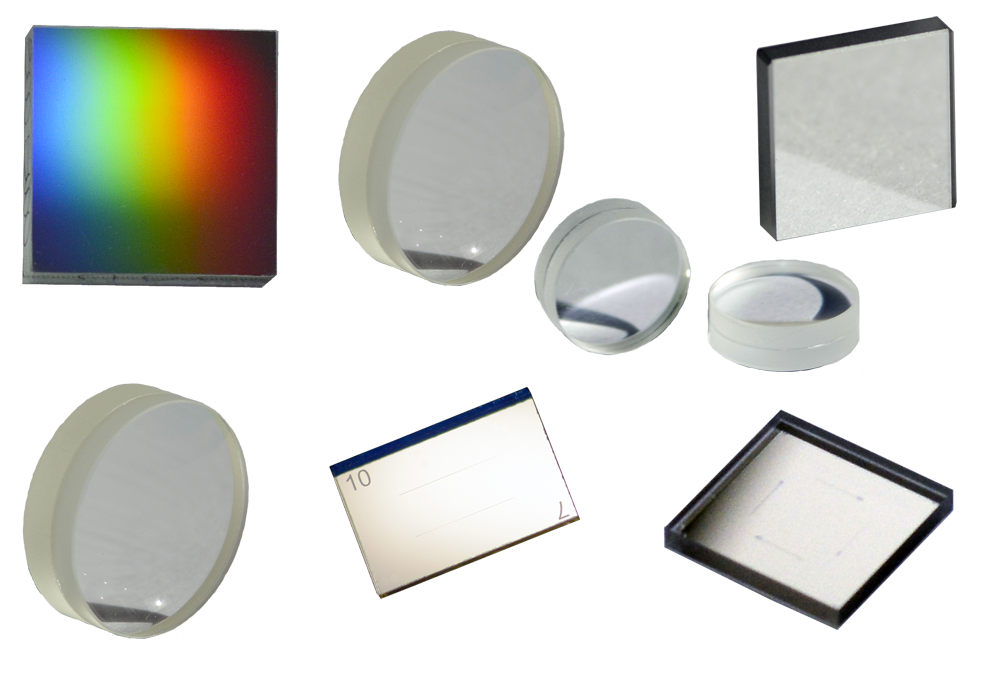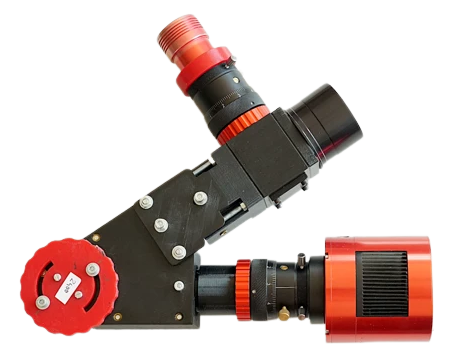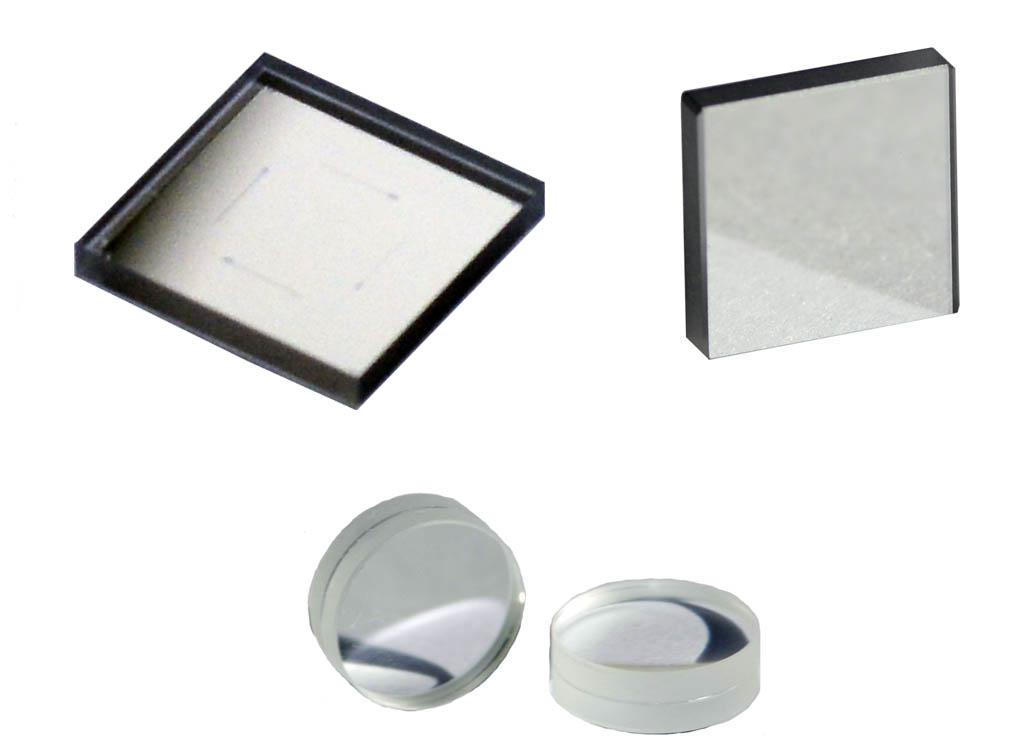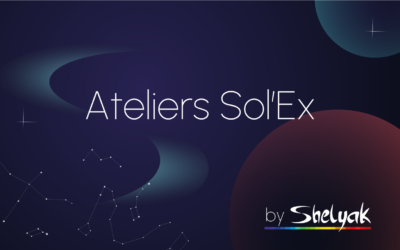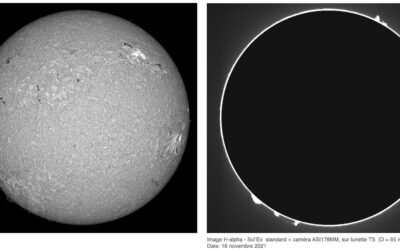Discover the workshops to learn all about the Sol'Ex (Solar Explorer): Optical kit / Sol'Ex observations / Motorization of the array, Vernier and thermal protection / DemoSol'Ex Tutorials PlaylistSolEx project workshop #1 SolEx project workshop #2 SolEx project...
Optical kit for Star’Ex HR spectrograph
170,40 € – 518,40 €
This optical kit lets you build a Star’Ex High Resolution (HR) spectroscope using 3D printing. It is fully compatible with the 3D printing files available on Christian Buil’s website, as well as with the mechanical kits offered by Azur3dPrint.
The Star’Ex lets you observe the spectra of bright objects (stars, nebulae, etc.) at high resolution, i.e. with great detail in the spectral profile.
Please note: this kit contains only the optical elements (see “Composition” tab): 3D-printed parts and additional elements (adapters, cameras, etc.) are not included.
Choose from the two possible options :
– Star’Ex HR optical kit, including everything you need to build a Sol’Ex or a Star’Ex HR
– Star’Ex HR add-on optical kit to turn your Sol’Ex into Star’Ex HR
All about this product
Description
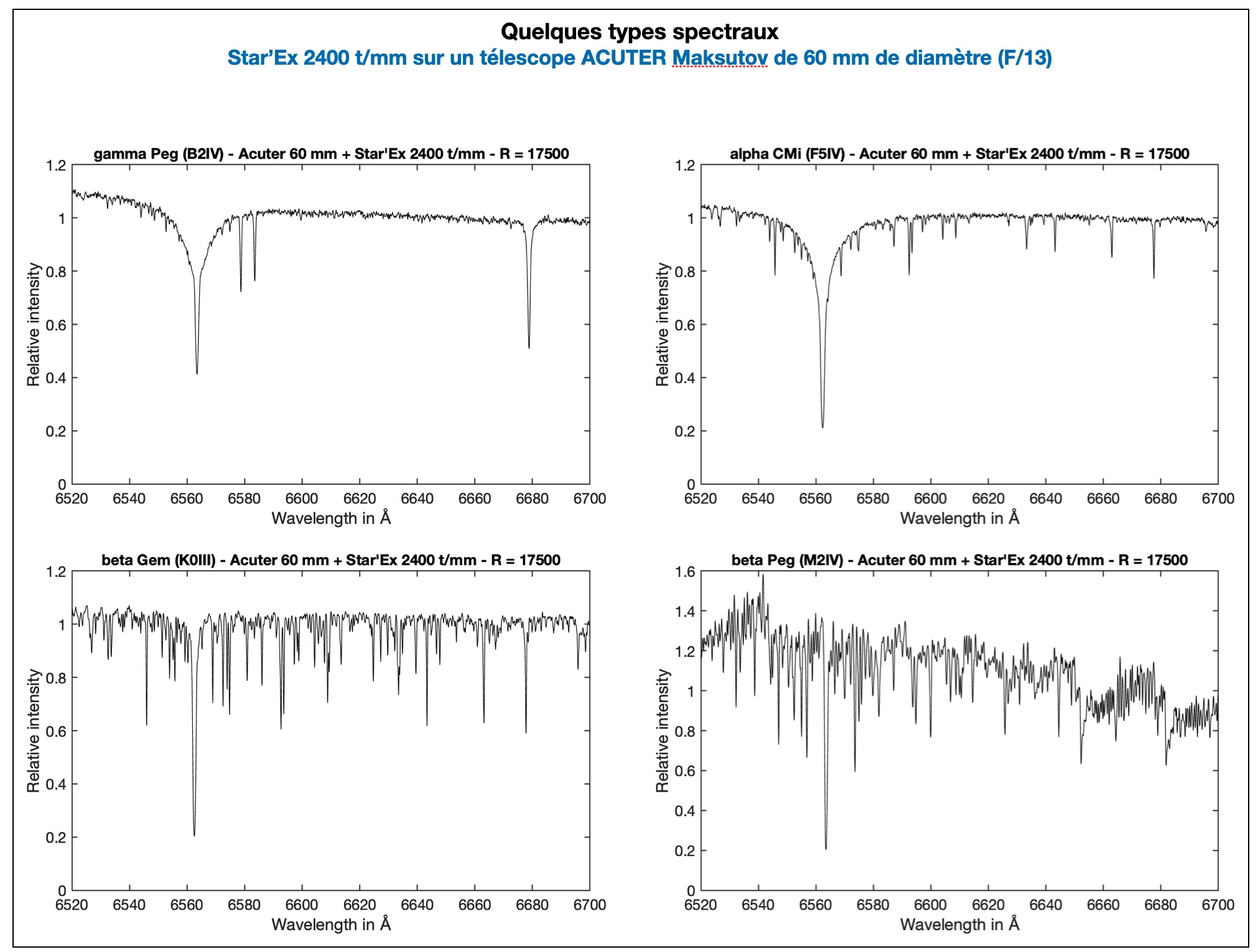
Specifications
- Spectral resolution: R = 700 to R = 30,000 depending on the slit width chosen (R = wavelength / spectral finesse)
- Wavelength range: 400 nm – 700 nm
- Internal reduction ratio: 125 : 80
- 10µm slit for maximum resolution, or 15, 19, 23 or 35µm slit, depending on your telescope.
Composition
Kit optique Star’Ex HR Ref : [ES0038]
For the Sol’ex part :
- [OP0176] Collimator doublet with 25.4mm diameter and 80mm focal length
- [OP0181] Objectif doublet lens with 25.4 mm diameter and 125 mm focal length
- [OP0177] 25 x 25mm 2400 tr/mm holographic grating
- [SE0289] A 2-position reflective slit 7 and 10 µm wide and 6mm long
For guidance / Star’Ex
- [OP0080] Two doublets with a diameter of 12.5mm and a focal length of 50mm
- [OP0010] Mirror of 15x15mm thickness 3mm
- [SE0288] Multi-width, 4-position 14/20/26/32 µm slit
Star’Ex HR optical kit Ref: [ES0037]
- [OP0080] Two doublets with a diameter of 12.5mm and a focal length of 50mm
- [OP0010] Mirror of 15x15mm thickness 3mm
- [SE0288] Multi-width, 4-position 14/20/26/32 µm slit
Documents
Applications
Articles related to this product:
Spectropolarimetry or how to observe the magnetic field of a star with a 72mm telescope and a 3D printed spectrograph
By Guillaume BertrandI started astronomy at the age of 15, in 2003, with the opposition of Mars. I quickly joined the astronomy club "Village du ciel" based in Vendée to exchange with other amateur astronomers. My first instrument was a 114/900, I got all the...
Sol’Ex & Star’EX: a new way to approach astronomy
The Sol'Ex project (later followed by Star'Ex) offers a new way of "entering Astronomy": it is an approach that is affordable, simple, fun and fascinating. Here is what it is in a nutshell.Sol'Ex, to startSol'Ex is a project designed, organized and led by Christian...


